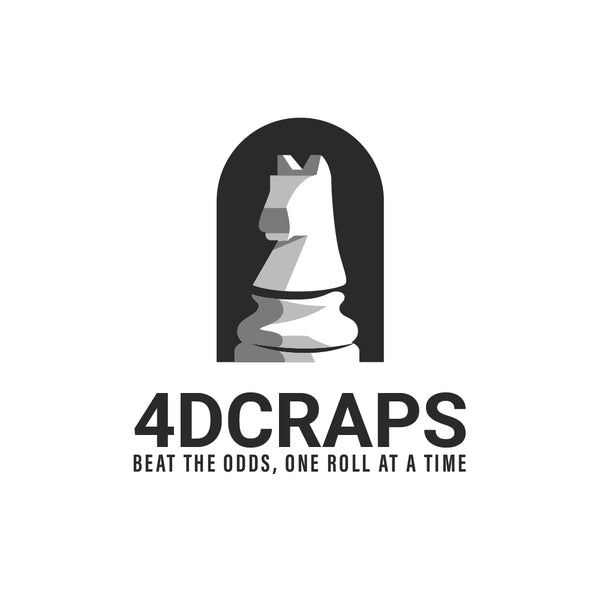🎲 "Waiting for a Don’t Pass Loss Before Playing the Pass Line" — Why That Strategy Is Flawed
Share
"Okay, here's what we're gonna do..."
"We're going to watch the table. The shooter rolls, and we’ll wait until the Don’t Pass line loses once — that means the shooter hit a natural (7 or 11 on the come-out), or they made their point. After that loss, then we jump in on the Pass Line. Why? Because the table's heating up, and the shooter’s starting to catch fire."
Sounds like a clever strategy, right?
Well... it’s not. Let’s unpack why this kind of thinking is results-oriented, and how it plays right into the trap of the gambler’s fallacy.
👨🏫 What’s Really Going On Here?
This so-called “strategy” assumes that:
- The table goes through “cycles”
- A Don’t Pass loss is a signal that a hot streak is starting
- Therefore, it’s a smart move to switch to the Pass Line after the Don’t Pass loses
But this logic is 100% results-based. It focuses on what just happened, not on the actual probabilities or expected values of the bets. It’s like saying:
“Now that it rained once, the sun must be coming out.”
It feels right… but it’s based on emotion, not math.
🔁 Gambler’s Fallacy: The Dice Have No Memory
This strategy hinges on the belief that the next roll will be affected by the last one, but in reality:
- Every roll of the dice is independent
- The odds of winning or losing on the Pass Line or Don’t Pass never change
- Just because the Don’t Pass lost doesn’t mean the Pass Line is more likely to win
There’s no "momentum" in dice. The table doesn’t have a memory. You're not watching a trend — you're watching random results and reading too much into them.
📊 The Math Doesn’t Support It
Let’s look at it this way:
- The Pass Line has a house edge of 1.41%
- The Don’t Pass Line has a house edge of 1.36%
- Neither bet becomes more or less favorable based on what happened last roll
So when someone says, “We’re going to wait for the Don’t Pass to lose once, then bet the Pass Line,” what they’re really saying is:
“We’re going to make a decision based on a completely irrelevant outcome.”
That’s like waiting for red to hit three times at roulette, and then betting black because “it’s due.”
🧠 Why This Is a Classic Results-Oriented Trap
Here’s what’s really happening behind that “strategy”:
- The player sees a Don’t Pass loss and thinks: "Okay, the tide is turning."
- They jump on the Pass Line, expecting a win — because they just saw a win for the Pass Line
- They’re letting a single result influence their entire strategy
That’s results-oriented thinking. It ignores the long-term math in favor of short-term emotional reactions.
It’s no different than saying, “I lost with the Don’t Pass last time — that must mean it’s the wrong bet.” In reality, even the best bet in the casino loses sometimes — that doesn't make it bad.
✅ A Better Way to Think Like a Craps Teacher
If you’re truly trying to teach someone how to win — or at least survive — at the craps table, here’s what you say:
“We don’t bet based on what just happened — we bet based on what has the best odds, every time we step up.”
So instead of waiting for a Don’t Pass loss to signal a “hot table,” do this:
- Pick the bet you want to play based on the math
- Stick to it
- Don’t let short-term wins or losses distract you from a solid plan
If you like the Pass Line with odds — great. Just know that’s what you’re playing, not because of what just happened, but because it fits your long-term strategy.
If you like the Don’t Pass for its slightly better odds and lower volatility — stick with it, and don’t switch just because you saw one loss.
🎯 Bottom Line
“Wait for a Don’t Pass loss, then bet the Pass Line” is not a strategy — it’s superstition dressed up as logic.
It’s driven by:
- Results-oriented thinking (judging strategy by what just happened)
- The gambler’s fallacy (believing past events influence future outcomes)
- And a desire for emotional comfort, not mathematical advantage
If you're serious about playing craps smart, make decisions based on probabilities, not patterns that don’t exist.
